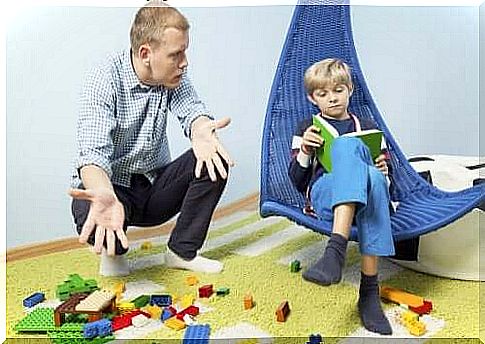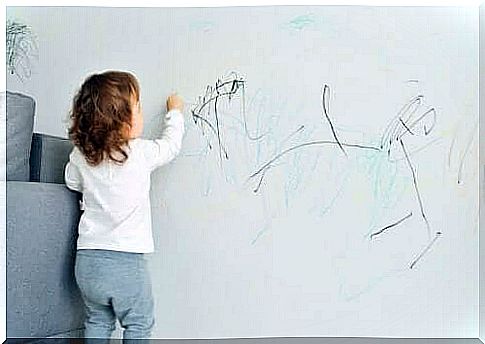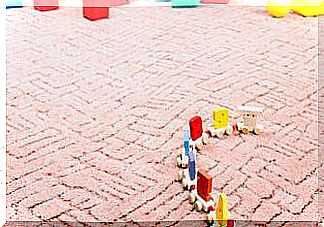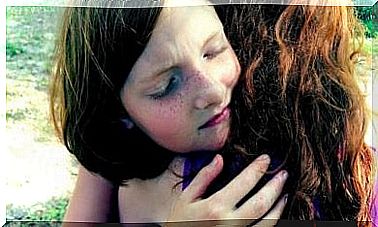Overcorrection To Change Children’s Behaviors

Educating a human being is a complex job that requires great doses of patience. Sometimes we feel that we’ve tried everything to reduce the unwanted behaviors of little ones, but nothing seems to work. In this article, we’re going to talk about overcorrection, one of the most effective techniques for modifying behavior.
Does your child play ball indoors, hit his sibling, paint the wall or throw toys on the floor? Even if you’ve asked him a thousand times not to do this, it all happens again.
Frustration will likely cause you to lose patience and raise your voice. You’ll scold him, yell at him, and you’ll feel bad for having to do it, and even then, it’s possible that this behavior will repeat itself.
How to act then? We have to set boundaries, but we’re tired of fighting with our kids. In that case, overcorrection can be a good educational tool if you are in this situation. It will help you eliminate negative behaviors at the same time that desirable behaviors will be trained.

Overcorrection: An Operant Technique
Behaviorism is a branch of psychology that studies behavior in terms of its consequences. Thus, it is postulated that the frequency of appearance of a behavior varies according to the consequences it has.
If they are positive, the frequency will increase, while if they are negative, it will decrease. In this way, by modifying the consequences, we can bring about changes in behavior.
There are two main ways we can do this: If we want a behavior to show up more often, we’ll use reinforcement. On the contrary, if we want to reduce or eliminate the presence of a behavior, we will use punishment.
Overcorrection, therefore, fits into punishment techniques, as it aims to reduce the frequency of undesirable behavior. However, this technique has several advantages over others in the same category:
- It is a harmless technique for the health and physical and psychological integrity of the child. No damage is dealt, nor is an aggression model shown (as with physical punishment).
- When punishment techniques are used, it is possible for the child to feel resentment and other negative emotions against the adult who applies them. However, in this case, the chances of this happening are minimized.
- Teach the child appropriate behaviors. So, while combating unpleasant behaviors, we establish a positive alternative.
What is overcorrection?
We know this is an operant technique designed to modify negative behaviors, but how does it manage to do this?
Well, the idea is that the child performs, repeatedly or prolonged, the appropriate behavior that is directly related to the behavior we want to eliminate. Furthermore, the child must have this behavior contingently.
That is, for each undesirable behavior, we must select another related, but positive one. Each time the first appears, the child must perform the second several times or for a long period of time.

There are two ways to apply overcorrection:
- Restorative Overcorrection: is indicated for behaviors that have a disturbing or destructive effect on the environment. For example, when a child paints a table. In this case, the idea is to restore the negative effects of bad behavior, leaving the space even better than it was originally.
- So, in that case, we’re going to ask her to clean the dirty table and also the other furniture in the room.
- Positive practice : when the behavior to be eliminated does not produce any change in the environment, we can use this method. For example, if the little one has left his clothes on the bathroom floor. Positive practice is to make the child behave incompatible with the first one several times or longer than necessary.
- So, we could ask her to practice the behavior of picking up clothes from the floor and putting them in the laundry basket 10 times.
coherent consequences
As we can see, despite being a punishment, the punitive element is not arbitrary, but is totally related to the problematic behavior. In this way, we teach the child through natural consequences and not irrelevant punishments.
Restoring the environment or practicing appropriate behavior has greater educational value than, for example, grounding the child without watching television. Therefore, and also due to its great efficiency, overcorrection is a technique to be considered.









